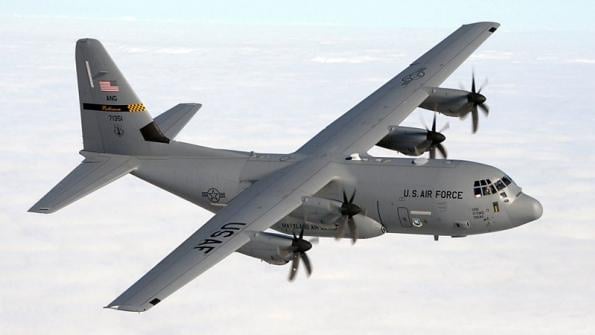
Before the House and Senate defense authorization panels met this week for their first conference negotiation meeting with panel leadership, governors from 14 states urged Congress to prohibit the proposed retirements of U.S. Air National Guard C-130 aircraft.
“We understand the that USAF seeks to cut five flying squadrons as part of an effort to reduce the C-130 [total aircraft inventory] to approximately 255 aircraft over the next five years,” according to a letter sent to the chairmen and ranking members of the House and Senate armed services committees. Governors who signed the letter represent California, Connecticut, Delaware, Georgia, Illinois, Missouri, Minnesota, Montana, Nevada, Ohio, Rhode Island, Texas, West Virginia and Wyoming.
Over the years, governors from these states have told the public that the retirements would have a detrimental impact on the nation’s airlift capacity.
“This reduction would make it difficult—if not impossible—for the Air National Guard to support routine training missions, as well as domestic operations to respond to emergencies and disasters,” the letter says.
The House’s mark of the fiscal 2021 defense policy bill included a provision written by House Armed Services seapower and projection forces subcommittee Chairman Joe Courtney (D-Conn.) that would require the military to have 292 C-130s across the tactical airlift fleet. If the provision stands, it would require the military to keep 37 more C-130 aircraft than what it proposed retiring. The Senate’s version of the bill does not include a similar provision.
“We are supportive of this number, as we believe it would allow the Air National Guard across the country to continue to support the National Defense Strategy, as well as domestic missions in response to hurricanes, floods, wildfires, and other emergencies,” the letter says.
The 2018 Mobility Capabilities and Requirements Study (MCRS) indicates 300 C-130s are needed to meet combatant commander requirements. The Pentagon is updating the MCRS and it was scheduled for release in January 2021. But the spread of the novel coronavirus has pushed its release back by three months, U.S. Transportation Command chief Gen. Stephen Lyons said Oct. 28.
Meanwhile, the Air National Guard argues it needs flexibility to retire C-130Hs so that it can fund upgrade programs for the rest of its C-130 fleet.
“The question now is how do we make sure that these platforms are survivable, lethal, and interoperable with the other platforms in the joint force,” Air National Guard Director Michael Loh said Oct. 29 during the annual Airlift Tanker Association conference. The answer is to continue the upgrade programs, but the military must find the resources so that these efforts are enduring, he said.
Loh said he is working with Congress and the joint staff to gain the authority to retire the aging C-130Hs. “I can’t get them up to where they need to be” in terms of upgrades, Loh said.
This disconnect between the military and its civilian oversight is a hurdle Air Force Chief of Staff Gen. C.Q. Brown is trying to clear.
“This has been our challenge as an Air Force,” Brown said Oct. 28 during the airlift conference. “We walk in trying to convince people and not having a dialogue with them.”
If the Air Force decides it needs to retire an aircraft, the service must be able to communicate to members of Congress what will go in its place in their districts, he said.
“If I can’t tell you what’s going to happen in the future, then they’re going to hang onto that,” Brown said.





